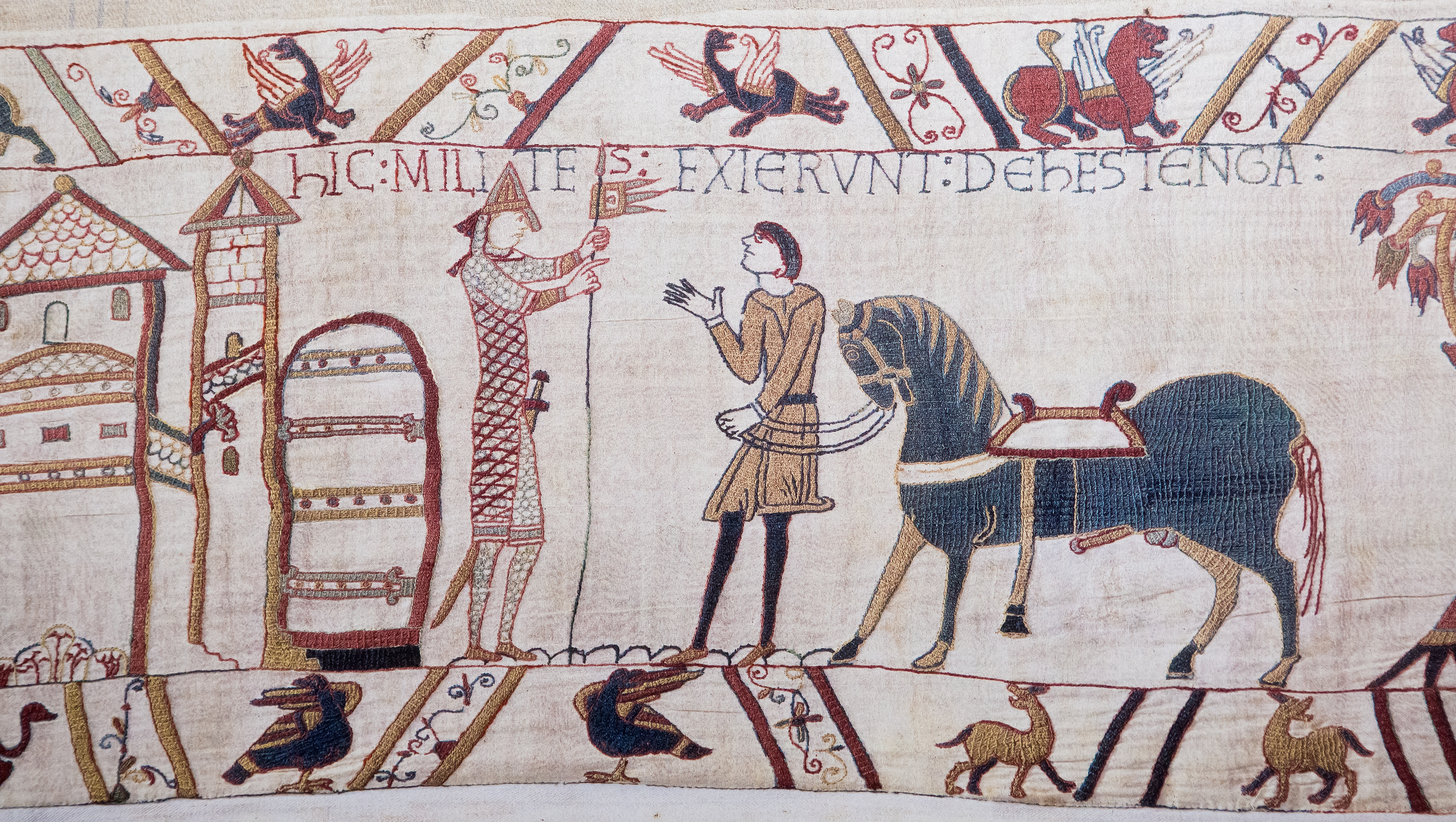If you had to guess, how many penises are on display in the Bayeux tapestry? I am sure you were not expecting that question on an otherwise quiet Friday afternoon, but here we both are. If this is something that piqued your interest or perhaps you’ve been wondering this yourself for a long time, then you’re not alone. The subject has consumed some historical attention for some time and has now become a small matter of debate concerning the famous medieval embroidery.
This isn’t just some cock-and-bull story; figuring out the reason behind all the penises slipped into the images could reveal insights into the artists who created it, whether they were simply subversive attempts to have a laugh or if they actually convey some sort of meaning to the narrative. According to the historian Alixe Bovey, some medieval doodles or other marginalia that we might consider crude or grotesque today were actually subtle commentaries on the events, themes, or texts they accompanied.
So what about the Bayeux tapestry? Well in 2018, in an article for HistoryExtra, Professor George Garnett from the University of Oxford recorded 93 male-members in his tally of todgers visible in the events surrounding the Norman conquest of England.
To his count, there are only five human penises on show, all of which are “tumescent” (erect), while 88 belong to horses, some of which are also depicted in a state of excitement. The horse with the most substantive penis belongs to Duke William of Normandy himself, the conqueror and future king of England.
Is this a coincidence? Perhaps not. As Garnett noted in his article: “The clear implications are that the virility of the two leading protagonists is reflected in that of their respective mounts, and that William was in this respect much the more impressive of the two, as the denouement of what survives of the tapestry showed to be the case.”
In contrast, all the other mounted horses in the battle demonstrate significantly more modest packages than the Duke’s prime steed.

Here, Duke William is shown with his extremely well-endowed horse, a depiction choice that may well be conveying a message about the Duke’s overall prowess.
Image credit: Jorisvo/Shutterstock.com
All of the human penises on display are relegated to the margins, which is a common space within medieval texts or other sources for the artists to take a few personal liberties or to find ways to convey sentiments to aid the viewer. Under the scene where the Count of Ponthieu takes Earl Harold, his captor, to see Duke William, the margins contain an image of a man with an erection reaching out to a naked woman who is covering her eyes and her groin with her hands.
It has been suggested that rather than just being a nonsensical addition, the pair are actually part of Æsop’s fables, concerning a father who has raped his own daughter.
“Perhaps the designer considered relevant the theme of a treacherous act of predation which could scarcely have been more heinous. It would certainly have colored the interpretation of the main scene above by any viewer of the tapestry who caught the allusion,” Garnett explained.
Garnett’s article is a fun example of how to read and access medieval sources through content that you may not consider part of the overall piece, and maybe that was the end of the story. That is, until now, for Dr Christopher Monk, an historical consultant for creatives and the heritage sector, appears to have identified a 94th penis.
According to Monk, there is a running man depicted in the tapestry margins who has something suspicious dangling below his tunic.
“I am in no doubt that the appendage is a depiction of male genitalia – the missed penis, shall we say. The detail is surprisingly anatomically fulsome,” Monk told HistoryExtra.
However, Garnett thinks this is a (ph)fallacy; that it is simply the man’s sword scabbard poking through.
Admittedly, the “point” of consideration does have a distinctly penis-like shape to it, but it is also strangely black. So if it is the missing member, then it is not quite so apparent compared to the other specimens on display in the tapestry.
But whether you’re team Garnett or team Monk, this debate really does demonstrate the complexities of the medieval mind. None of these image pieces is frivolous, even if we think they’re funny today. They are part of a coded system of communicating layers of meaning, especially to those who know how to read them. You just need to take your time to look.
[H/T: The Guardian]
Source Link: How Many Penises Appear In The Bayeux Tapestry? That Question Is Harder Than You Think